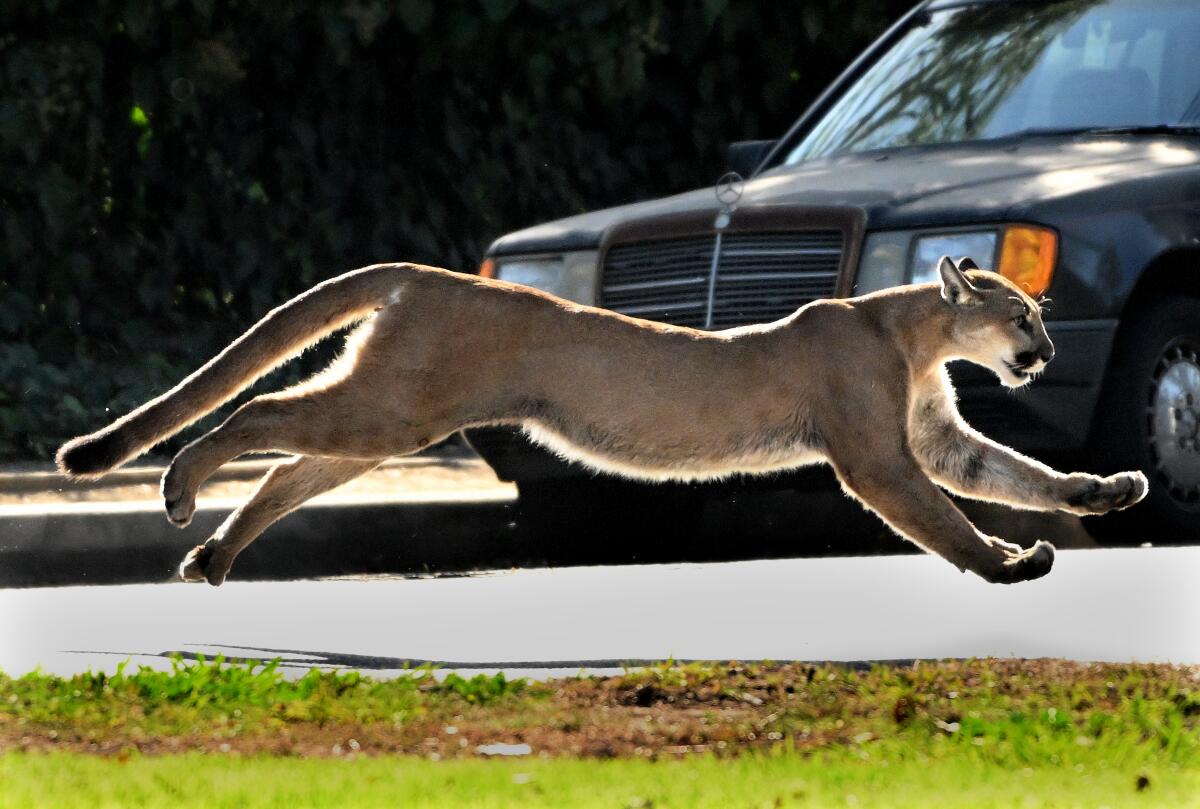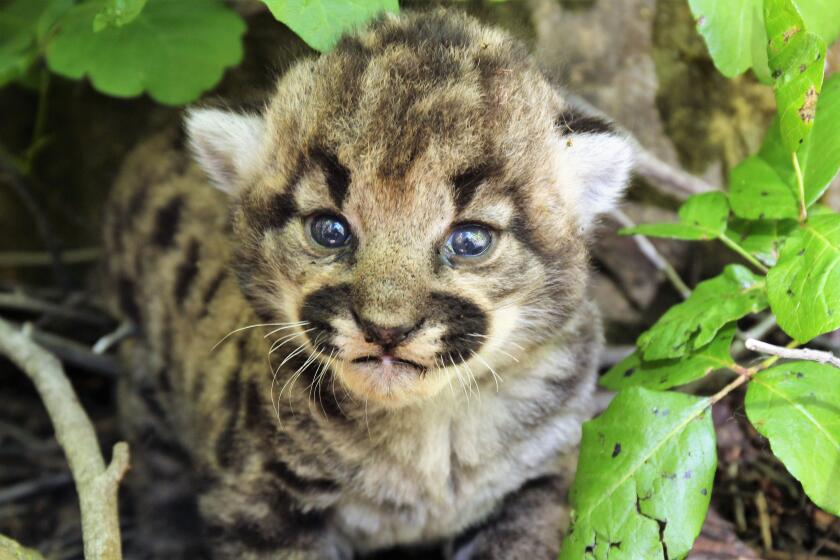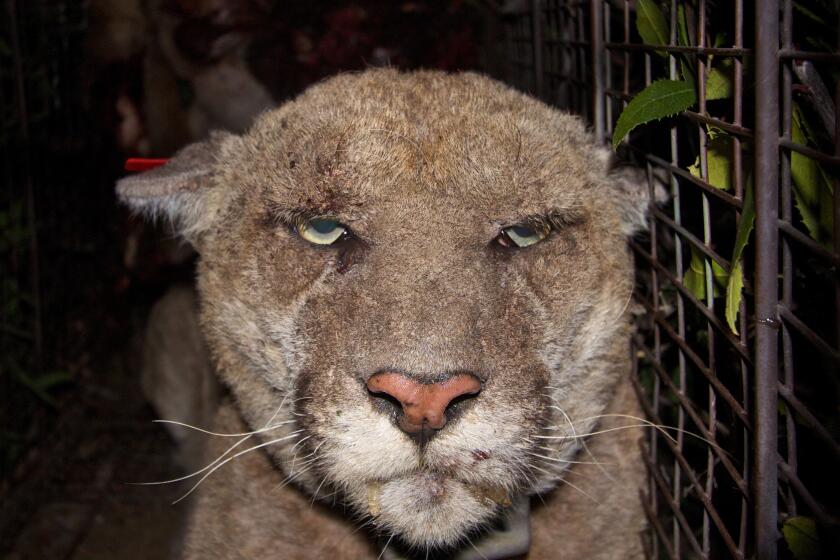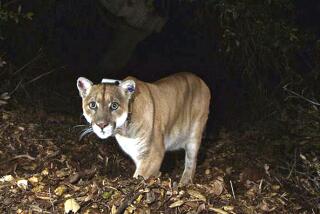Editorial: California’s pumas are worse off than we thought. They need immediate help or could die off

Southern California is treacherous for mountain lions to navigate. Just in the last two weeks, three lions have died on roads.
The much-loved female cat known as “Uno” — because she had just one working eye — who roamed Orange County mountains was hit by a vehicle near Santiago Canyon Road and died of her injuries. Another female mountain lion was found dead on Las Virgenes Road in Calabasas. And most recently, a dead lion was found on the shoulder of the 60 Freeway near Diamond Bar.
Just how many big cats are out there struggling to survive? Not as many as some experts thought, it turns out.
P-77’s litter was found in a den in Simi Hills. What kind of life will these three pumas have if we don’t stop running them down on the roads and poisoning them with rodenticides?
An ambitious seven-year study by the California Mountain Lion Project has given us some depressing answers about the size of the state’s puma population. Previously, researchers estimated that there were between 4,000 and 6,000 mountain lions. But that figure from the 1980s was a “back of the envelope” estimate with limited data, according to Justin Dellinger, a large-carnivore scientist who led the study. Using different models, the study came up with a more accurate estimate of between 3,200 and 4,500.
The joint effort of researchers from California universities, the state Department of Fish and Wildlife and environmental and wildlife conservation nonprofits collared and observed pumas (and analyzed their scat) in 13 areas throughout the state. It will be submitted to a scientific journal for peer review later this year. The study included lions in several Southern California mountain ranges, but not the Santa Monica Mountains — where the National Park Service has been studying lions for two decades — because of the Woolsey fire.
Scientists have completed the first comprehensive estimate of mountain lions in California, a vital statistic needed to shape puma-friendly land-use decisions and ensure that the predators can find room to roam, mate and find prey.
Scientists, including Dellinger, believe the next question is whether these existing populations are genetically healthy. Mountain lions may be apex predators, but if they can’t cross a road to find mates and territory without risking their lives, they end up hemmed in to one area and are forced to inbreed. This can result in unhealthy offspring and reduced fertility. Santa Monica Mountains researchers have seen signs of inbreeding in the population they study. The worse it gets, the bigger the risk that the lion population will spiral downward in what scientists call an extinction vortex.
Dellinger says we still have time to avoid that fate by taking steps to protect the remaining pumas. Without intervention, the long-term viability of populations in the Santa Monica and Santa Ana mountain ranges “is pretty much next to nothing,” he said.
A bill awaiting Gov. Gavin Newsom’s signature could take off the market one of the most commonly used rat poisons that are ingested by raptors, mountain lions, bobcats and other wildlife.
This is why we need to curb the use of rodenticides, which can end up killing lions when they eat prey that have ingested rat poison. And it’s also why we need more wildlife crossings to help mountain lions and other animals get to the other side of busy roads and freeways. Not all crossings have to be as spectacular or expensive as the $87-million one under construction over the 101 Freeway at Liberty Canyon. More modest overpasses and underpasses and fencing along roadways can help too.
The California Fish and Game Commission is expected to finally decide this year whether to list Central and Southern California lions as either threatened or endangered species under state law. A listing could make the efforts to protect mountain lion connectivity even more of a priority for the state. If we want California’s mountain lions to survive and thrive, they need all the extra protection — from us — they can get.
More to Read
A cure for the common opinion
Get thought-provoking perspectives with our weekly newsletter.
You may occasionally receive promotional content from the Los Angeles Times.













